In the landscape of auto insurance, the concept of deductibles plays a pivotal role in shaping the policyholder’s financial responsibilities and risk management strategies. Deductibles, the amount paid out of pocket before insurance coverage commences, greatly influence the premium costs and the decision-making process regarding claims.
While selecting an appropriate deductible amount might appear straightforward, it encapsulates various considerations including financial stability, risk tolerance, and the long-term impact on insurance expenses. As we unravel the complexities surrounding deductible car insurance, it becomes evident that moving through the types, implications on premiums, and strategic adjustments requires a nuanced understanding.
This exploration prompts a deeper inquiry into how deductibles can be optimized to align with individual financial goals and risk profiles.
Understanding Deductibles
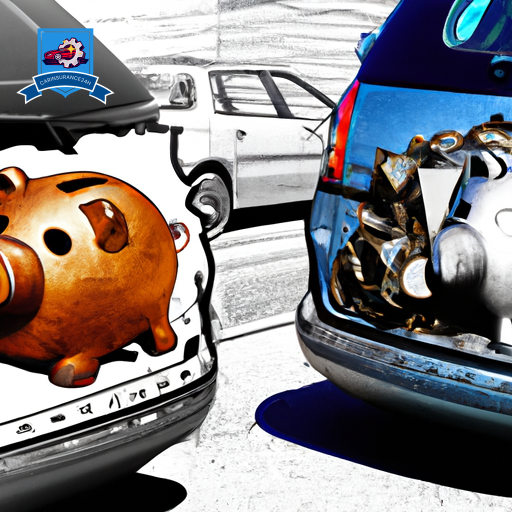
A car insurance deductible is the amount policyholders must pay out of pocket before their insurance coverage begins to cover the costs of a claim. This deductible definition is central to understanding how car insurance policies function, setting a foundation for policyholders to manage their financial responsibilities in the event of an accident or damage. The deductible amount varies depending on the policy and can greatly influence the claim process and the overall cost of insurance.
The claim process initiates when the policyholder reports an incident to their insurance company, seeking compensation for damages covered under their policy. Before the insurance company contributes to the repair or replacement costs, the policyholder is required to pay the deductible amount. For instance, if the total repair cost is $2,500 and the deductible is $500, the policyholder pays the first $500, and the insurance company covers the remaining $2,000.
Choosing the right deductible is a balance between risk tolerance and financial capability. A higher deductible generally leads to lower premium costs, as the policyholder assumes a greater share of the risk. However, it also means more out-of-pocket expenses when filing a claim. Conversely, a lower deductible reduces the financial burden at the time of a claim but results in higher premium payments.
Understanding the deductible is important for policyholders to make informed decisions about their insurance coverage. It directly affects their financial planning and risk management strategies, underscoring the importance of selecting a deductible that aligns with their needs and circumstances.
Types of Deductibles
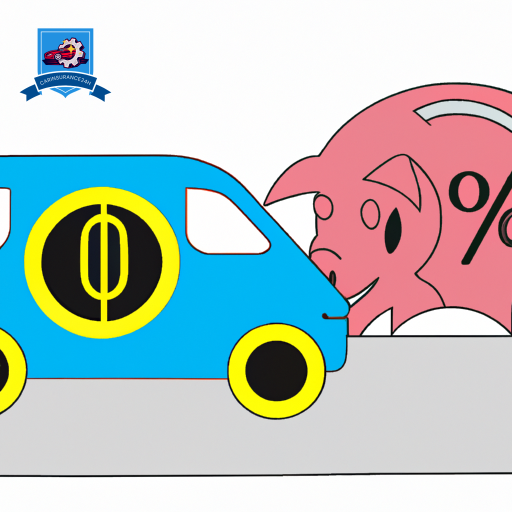
Having established a foundational understanding of deductibles, we now turn our attention to the types of deductibles commonly encountered in car insurance policies: fixed deductible amounts and percentage-based deductibles.
Fixed deductible amounts specify a set dollar amount that policyholders must pay out-of-pocket before insurance coverage begins.
In contrast, percentage-based deductibles determine the deductible cost as a percentage of the insured vehicle’s value, introducing a variable element into the cost calculation.
Fixed Deductible Amounts
In the domain of car insurance, fixed deductible amounts refer to predetermined sums that policyholders must pay out-of-pocket before their insurance coverage commences. This approach simplifies the claims process and provides clarity to both insurers and insured. Understanding this concept is essential, especially considering the evolving deductible trends and legislation affecting insurance policies.
- Predictability: Allows policyholders to plan their finances better.
- Simplicity: Eases the claims process with straightforward calculations.
- Customization: Insurers offer various fixed deductible options.
- Legislative Compliance: Conforms to state-specific insurance laws.
- Trend Awareness: Reflects current trends in deductible preferences.
Fixed deductible amounts offer a balance between risk and responsibility, making them a popular choice among policyholders seeking transparent and manageable insurance solutions.
Percentage-Based Deductibles
Percentage-based deductibles represent an alternative approach, wherein the policyholder’s financial responsibility is calculated as a proportion of the total claim amount. This method aligns the deductible with the scale of the claim, potentially offering a more essential framework for both insurers and insureds.
As deductible trends evolve, the adoption of percentage-based deductibles is increasingly viewed as a strategy to mitigate the impact of rising claim costs on insurance premiums. Additionally, deductible legislation in some jurisdictions has started to recognize and regulate the use of percentage-based deductibles, ensuring transparency and fairness in their application.
This regulatory oversight is vital in maintaining consumer trust and stability in the insurance market, ensuring that deductible structures remain a balanced component of the risk-sharing equation.
Setting Your Deductible
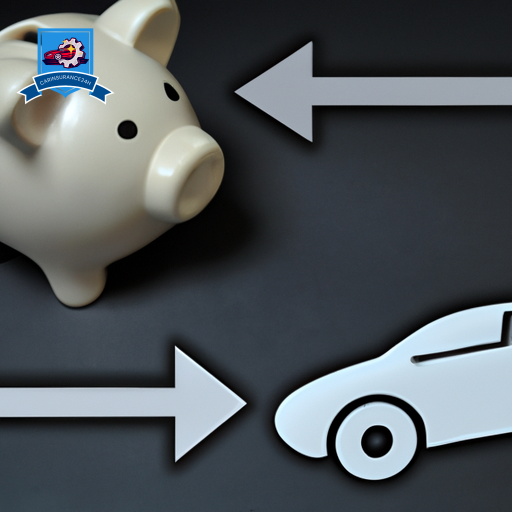
Choosing the appropriate deductible for your car insurance policy is a critical decision that directly impacts both your financial security and risk management strategy. Understanding the nuances of deductible amounts is essential for aligning your policy with your financial situation and tolerance for risk.
A thorough financial impact analysis will further confirm that your choice balances potential savings against the risk of out-of-pocket expenses.
Understanding Deductible Amounts
Setting the right deductible amount for your car insurance policy requires careful consideration of your financial situation and risk tolerance. It’s not only about finding a balance but also understanding the impact of deductible history and deductible legislation on your options.
- Deductible history shows how deductible amounts have evolved over time, influencing current practices.
- Deductible legislation impacts the minimum and maximum deductible options available to policyholders.
Financial readiness to cover out-of-pocket expenses in case of a claim is vital. The choice of deductible affects premium costs—higher deductibles typically lead to lower premiums. Risk tolerance: Evaluating how much risk you’re willing to take on can guide your deductible decision.
Understanding these aspects can guide you in setting an appropriate deductible for your needs.
Balancing Risk and Reward
After understanding the fundamentals of deductible amounts and their implications, the next step involves carefully weighing the potential risks against the possible rewards when deciding on your car insurance deductible. This decision is pivotal in formulating effective premium strategies.
A higher deductible reduces the premium cost but increases the out-of-pocket expense in the event of a claim. Conversely, a lower deductible results in higher premiums but less financial strain during a claim. Hence, evaluating claim frequency is essential.
Individuals with a history of rare claims may benefit from opting for a higher deductible, leveraging the reward of lower premiums. Conversely, those with frequent claims might find a lower deductible more cost-effective, minimizing financial risk. This balance between risk and reward is vital in setting an appropriate deductible.
Financial Impact Analysis
Conducting a financial impact analysis is important when determining the best deductible for your car insurance policy, ensuring it aligns with your personal financial situation and risk tolerance.
- Evaluating Your Emergency Fund: Can you afford a high deductible without straining your finances?
- Examining Premium Savings: Higher deductibles often lead to lower premiums. Is the saving worth the risk?
- Understanding the Claim Process: A higher deductible could complicate the claim process, potentially discouraging small claims.
- Risk of Insurance Fraud: Lower deductibles may increase the temptation for fraud, impacting premiums.
- Future Financial Planning: How does choosing a particular deductible affect your long-term financial goals?
Each of these considerations plays an important role in setting a deductible that not only provides peace of mind but also protects your financial health.
Impact on Premiums
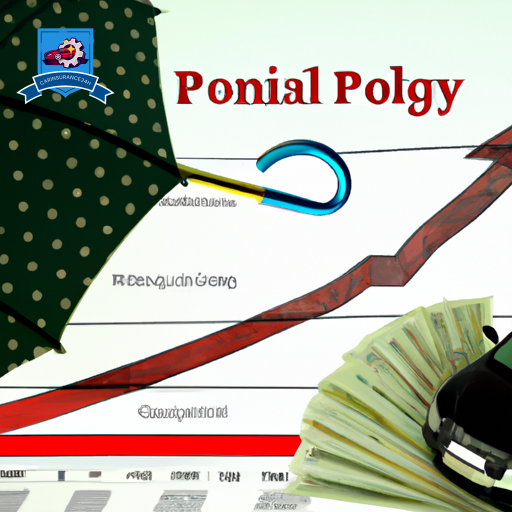
Choosing a car insurance deductible directly influences the cost of premiums, establishing a financial equilibrium between upfront costs and ongoing expenses. Premium calculation is a nuanced process, integrating various factors including the chosen deductible. A higher deductible generally results in lower monthly premiums because it shifts more risk from the insurer to the insured. Conversely, a lower deductible increases the insurer’s risk, leading to higher premiums. Policy discounts may also be affected by the deductible choice, with insurers often offering reductions for policies with higher deductibles, acknowledging the decreased likelihood of small claims.
This relationship between deductibles and premiums is fundamental in designing an insurance policy that aligns with the policyholder’s financial strategy and risk tolerance. It is imperative for policyholders to grasp how these elements interact to make informed decisions about their insurance coverage.
The table below illustrates the typical impact of different deductible levels on insurance premiums:
| Deductible Amount | Monthly Premium | Policy Discount |
|---|---|---|
| $250 | High | Low |
| $500 | Moderate | Moderate |
| $1000 | Low | High |
This structured approach to premium calculation allows individuals to strategically select their deductible, balancing their immediate financial capabilities with their long-term financial protection. It is essential for policyholders to ponder their personal circumstances and risk tolerance when making these decisions, as this will have a noteworthy impact on their insurance experience and financial health.
Deductible and Risk Management

Selecting the appropriate car insurance deductible is a critical component of an individual’s overall risk management strategy. It involves a balance between short-term affordability and long-term financial protection. A deductible is the amount you pay out of pocket before your insurance coverage kicks in after an accident. It’s an essential element that directly impacts your policy’s effectiveness in safeguarding against financial loss.
Incorporating the right deductible into your car insurance policy is fundamental for several reasons:
- Financial Stability: A higher deductible might reduce your premium, but it requires you to have sufficient savings to cover this amount in case of an accident.
- Risk Tolerance: Your choice reflects your comfort level with risk. A lower deductible means less financial stress in the event of a claim but generally comes with higher premium costs.
- Coverage Scope: Understanding policy limits and coverage exclusions is paramount. These factors influence the overall protection your insurance offers and should guide your deductible decision.
- Claim Frequency: If you rarely have accidents, a higher deductible could save money over time. However, this strategy demands careful financial planning.
- Market Value: For older vehicles, a lower deductible might not always be cost-effective considering the car’s depreciated value.
Choosing the right deductible is a personalized decision that should align with your financial situation, driving habits, and risk tolerance. It’s essential to thoroughly review your policy’s details, including policy limits and coverage exclusions, to make an informed choice that maximizes your protection while managing costs effectively.
Calculating Potential Savings
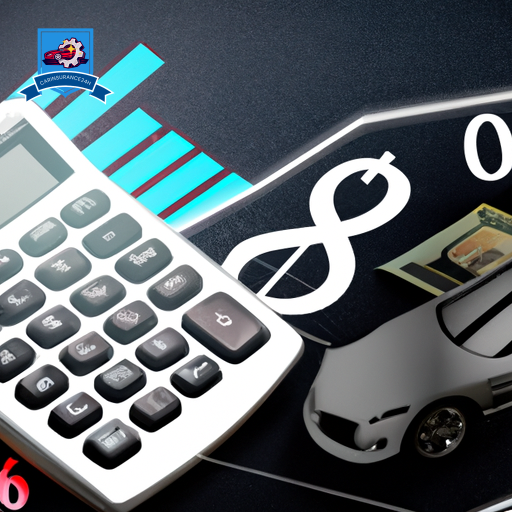
Calculating potential savings from different deductible options requires a careful analysis of one’s financial situation and driving record. To navigate this complex decision, individuals can utilize a savings calculator, a tool designed to compare the costs and savings associated with various deductible amounts. By inputting specific data such as their driving history, vehicle type, and current insurance premiums, users can receive tailored estimates that highlight potential savings over time.
Furthermore, understanding the relationship between deductibles and policy discounts is important. Typically, opting for a higher deductible results in lower monthly premiums, as it signifies to the insurer that the policyholder is willing to assume more financial responsibility in the event of a claim. This risk-sharing mechanism can activate policy discounts, further enhancing the potential savings. However, the savings must be weighed against the policyholder’s ability to absorb the financial impact of a higher out-of-pocket cost in the event of an accident.
A structured approach to this analysis involves comparing the annual savings achieved through reduced premiums against the increased deductible cost. If the savings accrued over a reasonable time frame exceed the additional deductible expense, this strategy might be financially beneficial. Conversely, if the potential out-of-pocket costs significantly outweigh the premium savings, a lower deductible might be more prudent.
High Vs. Low Deductibles
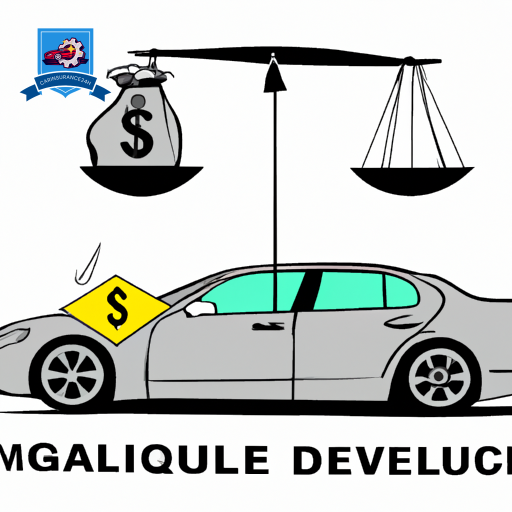
Choosing between high and low deductibles in car insurance policies necessitates a careful examination of their impact on premiums and their role in a risk management strategy.
A high deductible plan typically offers lower premium payments, but requires a higher out-of-pocket expense in the event of a claim.
Conversely, a low deductible plan results in higher premiums but lessens the financial burden after an accident, making it important to balance these factors based on individual risk tolerance and financial capacity.
Impact on Premiums
Opting for a higher deductible on your car insurance policy typically results in lower premium costs, while selecting a lower deductible can lead to higher monthly or annual premiums. This decision impacts your insurance costs due to the balance of risk shared between you and the insurer.
The choice of deductible should consider:
- Premium factors: Higher deductibles lower the insurer’s risk, often leading to policy discounts.
- Cash flow: Can you afford the higher out-of-pocket costs?
- Savings: Higher deductibles might mean more savings on premiums.
- Risk tolerance: Your comfort with assuming more risk.
- Driving history: Safer drivers might opt for higher deductibles.
Understanding these elements is important in making an informed decision that aligns with your financial situation and risk management preferences.
Risk Management Strategy
Selecting the appropriate deductible for your car insurance policy is a critical component of an effective risk management strategy. It impacts not only the claim processes but also the likelihood of policy cancellation. Below is a comparison between high and low deductibles:
| Factor | High Deductible | Low Deductible |
|---|---|---|
| Premium Cost | Lower | Higher |
| Out-of-Pocket Cost | Higher at Claim Time | Lower at Claim Time |
| Risk Level | Higher Financial Responsibility | Lower Financial Responsibility |
| Claim Processes | May Deter Small Claims | Encourages Filing Claims |
Choosing between high and low deductibles involves analyzing your financial situation, risk tolerance, and the potential impact on claim processes and policy cancellation. This decision shapes your overall risk management strategy in relation to car insurance.
Deductibles in Accidents
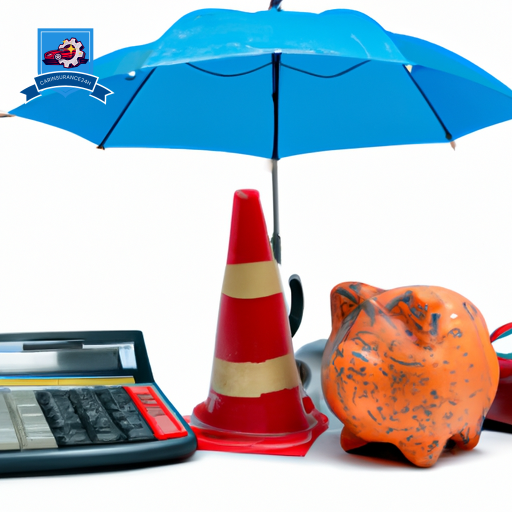
In the context of vehicular accidents, a deductible represents the amount policyholders are required to pay out-of-pocket before their insurance coverage contributes to the cost of repairs or replacement. This concept is pivotal in understanding how insurance policies work, especially when moving through the aftermath of an accident. The deductible amount is predetermined when the policy is purchased and can greatly affect the claim process and the applicability of benefits like accident forgiveness.
Understanding deductibles in accidents is essential for policyholders for several reasons:
- Financial Preparedness: Knowing the deductible amount helps in financial planning, making sure that funds are available when needed.
- Claim Process: It influences the claim process; a higher deductible might discourage filing minor claims.
- Accident Forgiveness: Some policies include accident forgiveness, which might not apply if the deductible is not met.
- Policy Rates: Choosing a higher deductible can lower premium rates, but it’s important to balance this with the ability to pay the deductible in case of an accident.
- Risk Management: It’s a tool for risk management, allowing policyholders to share risk with insurers.
When involved in an accident, the deductible amount directly impacts the out-of-pocket expenses a policyholder will incur. This makes choosing the right deductible a critical decision when purchasing car insurance. It’s also important to understand how features like accident forgiveness interact with deductibles during the claim process. This knowledge ensures that policyholders can make informed decisions that align with their financial situation and risk tolerance levels.
Changing Your Deductible

Adjusting the deductible on your car insurance policy is a strategic decision that can influence both your premiums and your financial responsibility in the event of a claim. The deductible is the amount you pay out of pocket before your insurance coverage kicks in. Opting for a higher deductible can lower your premium costs, but it means more out-of-pocket expenses when you file a claim. Conversely, a lower deductible reduces your upfront cost when claiming but typically results in higher premium payments.
When considering a change to your deductible, it’s important to weigh the financial impact and understand any deductible exceptions that may apply. For instance, some policies might feature specific scenarios where the deductible is waived or reduced. Knowing these exceptions can significantly affect your decision-making process.
| Scenario | Impact on Deductible |
|---|---|
| Comprehensive Claims | Lower Deductibles Possible |
| Collision Claims | Higher Deductibles Common |
| Policy Cancellation | Deductible Adjustments Nullified |
| Deductible Exceptions | Potential Waiver or Reduction |
Before making any changes, review your financial situation and risk tolerance. A higher deductible might save you money on premiums in the short term but consider if you can afford the higher out-of-pocket cost in the event of an accident. Also, be aware that changing your deductible could have implications for policy cancellation. Some insurers may impose restrictions or fees for changing your deductible mid-policy, so it’s crucial to consult with your insurance provider before making any adjustments. This careful consideration ensures that you make an informed decision that aligns with your financial goals and coverage needs.
Deductible Myths Debunked

Understanding the impact of adjusting your deductible is important, yet it’s equally essential to dispel common myths surrounding how deductibles work in car insurance policies. Deductible confusion and coverage myths can lead to misunderstandings about the nature of your coverage and how to best utilize it. Let’s address some of these myths directly:
-
A higher deductible always leads to markedly lower premiums. While it’s true that increasing your deductible can lower your premium, the savings may not always be as substantial as you expect. It’s vital to compare the savings with the potential out-of-pocket costs in the event of a claim.
-
The deductible applies to all types of claims. In reality, deductibles typically apply to collision and inclusive coverage. Other types of coverage, such as liability, do not have deductibles.
-
Paying a deductible means you’re at fault. This is a common misconception. Your deductible is the amount you agreed to pay out-of-pocket for repairs or replacement before your insurance coverage kicks in, regardless of fault.
-
If damages are below the deductible, insurance won’t investigate the claim. Even if the damages are less than your deductible and you choose not to file a claim, your insurer may still investigate to determine fault and if another policy should cover the damages.
-
Once the deductible is chosen, it cannot be altered. Policyholders can adjust their deductible at any time, not just at renewal. However, it’s important to contemplate how this change may affect your premiums and coverage.
Frequently Asked Questions
How Does a Deductible Affect My Eligibility for Rental Car Coverage After an Accident?**
A deductible’s impact on eligibility for rental car coverage post-accident is multifaceted. When evaluating rental policies, insurers often consider the deductible amount to determine coverage extent and duration limits.
A higher deductible might limit the rental coverage offered, affecting both the quality and period of the rental car provided. Consequently, it is imperative to conduct a thorough rental policy comparison to understand how deductible choices influence the scope and duration of rental car coverage after an accident.
Can My Deductible Be Waived if I’m Not at Fault in an Accident and the Other Driver’s Insurance Is Paying?**
In situations where fault determination clearly attributes responsibility to the other driver, it’s conceivable for one’s deductible to be waived, facilitating a smoother financial recovery process.
This principle hinges on deductible recovery mechanisms that insurance companies engage in, known as subrogation. Through this process, insurers seek reimbursement from the at-fault party’s insurance, potentially leading to the waiver of the deductible for the not-at-fault party, thereby minimizing their financial burden.
What Are the Tax Implications of Different Deductible Levels for Personal Versus Business Vehicles?**
The tax implications of deductible levels for vehicles depend heavily on their classification as personal or business assets. For business vehicles, higher deductibles can lead to greater tax deductions under certain conditions, as expenses related to the operation, including insurance costs, are often deductible.
Conversely, personal vehicle expenses offer limited tax benefits. It’s critical to consult tax professionals to understand how deductible choices impact tax obligations, ensuring compliance and optimization of potential deductions.
How Does the Deductible Apply in Cases of Partial Theft or Vandalism, Such as Stolen Wheels or Graffiti?**
In cases of partial theft or vandalism, such as stolen wheels or graffiti, the deductible applies based on the policy’s terms during the claim process. Policyholders must choose deductible options upon purchasing insurance, determining their out-of-pocket costs before insurance coverage begins.
When filing a claim for partial loss, the deductible amount is subtracted from the claim payout, directly influencing the compensation received by the policyholder for the covered event.
Are There Any Special Deductible Considerations or Exemptions for Electric or Hybrid Vehicles?**
In the evolving landscape of automotive technology, electric and hybrid vehicles stand out, necessitating a nuanced approach to insurance considerations.
For these vehicles, insurers might offer specialized deductible options or exemptions, particularly focusing on unique aspects such as battery replacement and charging infrastructure.
This structured approach guarantees that owners of these advanced vehicles receive precise, logical coverage that aligns with the specific risks and costs associated with their operation and maintenance.
